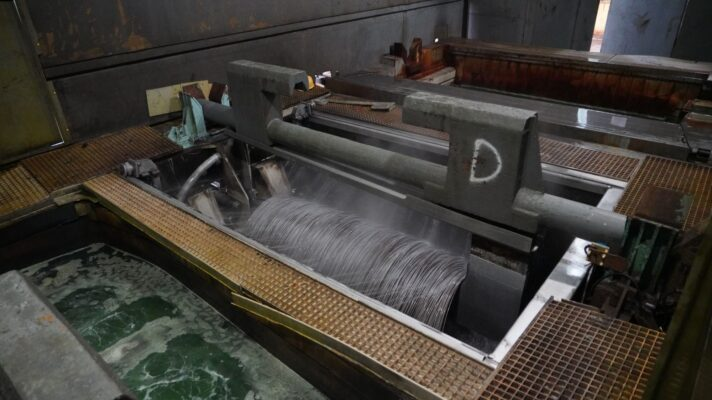Pickles have become a trend in recent years. Few restaurant menus do not include them in one way or another. But the truth is that pickling fresh vegetables, fruits and other foods is a culinary technique that has several millennia of history. The origin of pickling is not known with certainty, but according to the New York Food Museum, archaeologists and anthropologists believe that it dates back to Mesopotamia, around the year 2400 B.C. They’re easy to prepare, you can pickle vegetables that are not sold ready-made, and you can adapt the process to your tastes.
It should be clarified that we will be talking here about quick pickles in vinegar that are kept in the fridge. There are also pickles in brine –water and salt at a certain concentration– where the vegetables ferment thanks to benign microorganisms that add flavors and aromas, while conserving the vegetables. They require another, longer process, so we will leave them aside for now. Tunnel Pickling Line

Pickles in vinegar are not fermented. Quite the opposite: acetic acid prevents the development of microorganisms —both “good” and “bad”— and thus conserves the food. Although their flavor does not have the complexity of the fermented ones, the advantage of these pickles is that you can make them in just one hour, or you can keep them in the fridge for weeks.
Ideally, they should be made of glass with a hermetic seal, or with a lid that closes well to prevent the refrigerator from being impregnated with the smell of vinegar. We do not sterilize the jars because, as I mentioned, we are going to keep the pickles cold. If you want to keep them in the cupboard, you would have to sterilize the jars and give them a heat treatment, something that requires more time and more energy.
To pickle our vegetables, we will use a base mixture of vinegar, water, sugar and salt that we will heat before pouring into the container. Depending on how acidic we want them, we can adjust the proportion of vinegar and the amount of sugar (less vinegar and more sugar for a smoother taste, and more vinegar and less sugar for a more one). To prepare standard pickles that are going to sit for at least 24 hours, we will use the same amount of vinegar as water.
Time is also a determining factor: if you are going to make ultra-quick pickles, significantly reduce the amount of water or eliminate it and use only vinegar. Which is the best for pickling? Preferably one that doesn’t mask the flavor of the vegetable: white wine, cider, rice or a mix of them. Regarding water: if the tap water in your house tastes good, use it; if you smell chlorine, use filtered or bottled water instead.
Regardless of which ones you choose, they must be fresh. We want them to have texture and good color, so the sad carrot from your fridge or the broccoli that is already yellowing are not the best for making pickles. Use them in other recipes.
If you are going to work with hard vegetables such as beets, carrots, broccoli or cauliflower, it is recommended that you cook them previously in salted water to soften them to the desired point. If you do not want to cook them, and you want them to be crunchy, cut them into thin slices, or grate them, in the case of carrots and beets. Onions, peppers and cabbage can be julienned. Green beans and other green vegetables retain their color better if you blanch them beforehand and pickle them whole, without the ends. Radishes can be cut into thin slices or sliced segments.
The creative moment has arrived. You can pickle vegetables with just the base liquid, but it’s much more fun if you flavor the solution with herbs, spices or seeds. You can use both fresh and dried herbs. Dill, thyme, oregano, and rosemary are good options. When it comes to spices, you can try grain mustard, cumin, cardamom, coriander, dill seeds, black or white pepper, chili flakes for a spicy touch, turmeric and paprika to add color. Other interesting options include bay leaf, garlic and fresh ginger. Combine the different options as you please.
Below you will find three examples of perfect pickles to use in salads. Keep in mind that the amounts may vary slightly depending on the size of the vegetables and the cut. The method is repeated in all cases: prepare the vegetables and place them in the clean pot, prepare the base liquid with the spices and herbs and bring it to a boil, completely cover the vegetables with the hot liquid, cover and store in the fridge. After 24 hours they will be ready to consume.
300 ml of apple cider vinegar
1. Peel the carrots. With the peeler, cut lengthwise strips. Place them in the jar in an irregular shape.
2. Heat the rest of the ingredients in a saucepan. When the liquid comes to a boil, pour into the pot until the carrots are covered. Cover and store in the refrigerator.
250 ml of apple cider vinegar
1. Remove the lower and upper ends of the radishes and cut them into thin slices. Place them in the jar.
2. Bring the remaining ingredients to a boil in a saucepan. Pour the hot liquid into the jar. Close and store in the refrigerator.
250 ml of apple cider vinegar
1. Cook the whole beets in salted water until slightly softened (or completely if you want them to be very tender). Peel and cut into thin slices. Place them in the jar.
2. Bring the rest of the ingredients to a boil in a saucepan. Pour the hot liquid into the jar. Close and store in the refrigerator.
Sign up for our weekly newsletter to get more English-language news coverage from EL PAÍS USA Edition

Prestressed Steel Strands Pickling Subscribe and read without limits